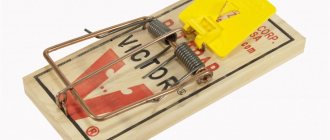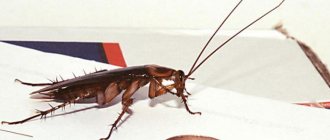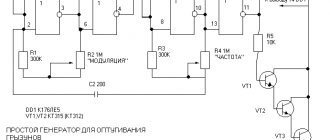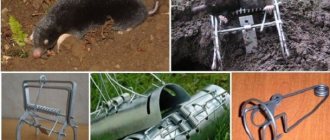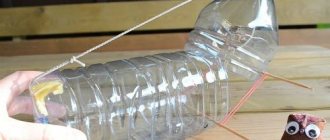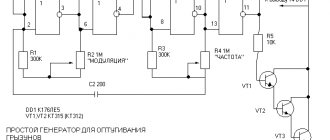Possible harm from wasps in the garden
Wasps are a significant obstacle to safe and comfortable outdoor recreation and living in suburban conditions. Insects feed not only on plant juice and fruit pulp; they are attracted to many foods, fresh fish and meat. They can actively search for rot in garbage cans and gather in clouds over carrion. They should be feared because they carry many infectious diseases.
Apiaries especially suffer from wasp infestations: they not only look for sweets, but also kill bees - they feed their larvae with them; at least 6-7 traps are needed throughout the entire territory. Their bites are painful and can become a source of infection with pathogenic microflora or severe allergies, including anaphylactic shock.
Wasps live in highly organized colonies, the numerous inhabitants of which are constantly in need of food, and there is a high probability of causing significant damage to the harvest of garden beds and fruit crops. Thanks to the presence of intelligence, insects use warnings of danger; they protect relatives by swooping in as a swarm. During the warm months, colonies increase rapidly, so it is important to exterminate them near houses where there are children.
What baits are best to use?
To successfully combat flying insects, you need to choose the right wasp bait. She should attract their attention with her smell.
Wasp baits that can be used in traps:
- 1 tbsp. l. liquid honey per 200 ml of warm water;
- 30 ml each of honey and fermented jam combined with 200 ml of white wine;
- 500 ml light beer with 2 tbsp. l. Sahara;
- 70 ml wine vinegar. 500 ml water and 2 tbsp. l. honey;
- jam with water in a ratio of 1:5.
The smell should spread in the air far beyond the device. Therefore, to strengthen it, you can add a little yeast (1/3 tsp) to any of these baits. The smell of fermentation works flawlessly. Such wasp bait must not only be poured into the traps, but also the walls and entrance holes of the device must be lubricated with this liquid.
Options for industrial traps
The most effective way to get rid of an unpleasant neighborhood is the use of insecticidal preparations, but this measure is not always advisable, especially if one of the family members suffers from high sensitivity to the poisons and chemicals present in the composition. In this case, it makes sense to use industrial traps for wasps and hornets instead of sprays and solutions.
Manufacturers offer many models, but they all have an identical operating principle: insects are lured into an isolated structure or container. Wasps fly to the smell of food and crawl into the body, from where they can no longer get out. Vivid examples are Raptor, BS 1201104, R-Plast, Wt-220.
Raptor wasp trap
The main advantages of this category of devices are ease of use and the absence of poisons and chemicals in the design. Products are placed near plantings, in the yard, directly in the house. The solution also has the following advantages:
- reusable use, accompanied by periodic laying of bait;
- the device does not arouse interest among bees;
- multifunctionality, as it also allows you to cope with mosquitoes, moths, flies;
- affordable price;
- environmental friendliness.
There are variations equipped with ultraviolet radiation instead of bait, but they have a small range of action. For insects flying towards heat and light, models with metal mesh have been developed. The latter is energized, pests die upon contact with electric current.
Factory models
Fishing stores currently do not suffer from a lack of assortment, and this also applies to various types of traps. Currently, you can purchase a fairly large number of them, but it is worth considering that not all of them can be legally used in certain regions of Russia.
The following types of fish traps are most often offered in stores:
- Umbrella. The name of this model matches the shape. There are several holes in its walls, each of which has cones made of mesh. Thus, once inside, the fish can no longer get out. Most often, umbrellas are used for catching live bait and small fish.
- Muzzle. This type of gear is a rigid wire frame in the shape of a cylinder or cone, covered with a net. At one or two of its ends there are small holes recessed into the trap. When entering them, the fish also cannot find a way out. Stationary muzzles are often made of hard material - plastic or metal mesh. Such models last longer and allow you to fish even in harsh conditions. In some stores this type of tackle is called a top.
When installing, it is worth considering that classic traps with an umbrella-shaped design also catch crayfish quite well, so in some reservoirs, even in the absence of fish, they can please you with a good catch.
These types of traps are sold in most fishing stores, as well as on various online platforms, such as Aliexpress. It is not difficult to purchase them, and they are relatively inexpensive. However, if you have the desire, it is quite possible to make a fish trap with your own hands.
Making your own traps
The simplest wasp traps, according to the recommendations of summer residents, are saucers with jam: theoretically, the insects should get stuck in the treat and die. In fact, they eat the sweetness and continue to fly around. It is better to use more effective measures that isolate the parasites that come across.
A simple trap made from plastic bottles
The container is cut so that the upper part is completely separated. The neck is freed from the lid, this improvised watering can is turned over and placed in the remaining large part of the bottle. The latter must first be lubricated with something sweet or equipped with aromatic bait. For reliability, the watering can and the lower container are fastened mechanically, for example, with wire, or glued together.
Such a homemade wasp trap made from a plastic bottle is hung on a strong twine near the nest and its contents are changed as it is filled with insects.
Funnel trap
The design is formed from a plastic container and a special through lining that looks like a watering can. They are found everywhere in hardware stores. The bottle is cut along the wall and a cover is placed in it. On the opposite side, the container is equipped with a ventilation hole. The trap is filled with sweet water, kvass or syrup; flies and wasps are especially attracted to the aroma of the fermented liquid. Content changes as needed.
When deciding how to make a trap for wasps, you can use another option from a plastic bottle. In a closed vessel, the walls are cut at several points. The necks cut off from other bottles, freed from the caps, are tightly inserted into the holes. The container contains products that interest flying pests.
Externally, such a product resembles a tree trunk with branches from the necks sticking out on the sides. Wasps enter the vessel through the left passages; their design does not allow the insects to escape. Dark bottles are not as interesting to wasps as transparent ones. Here you can use sausages, leftover chicken, beer with added sugar, dried fish, and apple juice as bait.
Wasp trap from a plastic bottle
You can also make a trap from a five-liter bottle. A sweet liquid, for example, fermented compote, is poured into the bottom. The vessel is closed with a lid; there should be a hole in it no smaller than a coin. In this case, it is also advisable to use transparent structures. The trap is hung in a convenient place by the existing handle.
Sticky trap
If the nest is located alarmingly close to a house or outbuilding, most likely its inhabitants fly near people very often. To catch them, you can use simple fly strips; they are placed at window and door openings, in the area around the house.
In gardens, apiaries and summer cottages, homemade versions of sticky traps are used. They are made on dense bases - oilcloth, wooden boards, pieces of plywood, plastic, hard cardboard. They are coated with a special non-drying glue, for example, intended for catching ants or cockroaches - these are Alt, Clean House, RaTrap. The distance between the strips of the product should be as small as possible. Next, the workpieces are suspended at selected points.
The disadvantage of this technique may be that all the insects get caught in it, the sticky surface quickly fills up. It becomes unusable after rains, so when placing it outdoors, it is advisable to choose at least a slightly protected place.
Purchased products: types, prices and reviews
If you don’t want to bother making a wasp trap yourself, then you can easily buy one. For example, the following models are actively sold in agricultural stores or online today:
- Wasp Trap is a wide plastic trap with a clear top and colored bottom. It has special entrances directed inward and upward, and the wasps that are inside can no longer find these entrances. The Wasp Trap has a convenient mount for hanging on branches, and costs about 400 rubles.
- Swissinno, Swiss made trap. Works much the same as the Wasp Trap, but looks like a neat little bucket. Sold already with bait that does not attract bees. It also costs about 400 rubles.
- GUARD'n CARE, made in China by order of a Dutch concern, is a product with several compartments of different widths. Costs about 350 rubles.
All of these traps are quite effective, and the price does not reflect their quality. You can buy either the one that is cheaper and easier to deliver, or the one that is in stock (we recommend giving preference to the Swissinno trap).
Review
“We suffered from wasps this summer. They made a nest in the fence at the dacha, and my daughter and I arrived a day before my husband. Well, on the very first day we were bitten once. I called my husband, he arrived with a purchased trap. This is a bucket with holes on the sides. They hung it right next to the nest and poured sweet compote into it. The wasps were caught for several days until the entire trap was filled, but this was not much use. The rest were flying anyway. It ended with my husband dousing their nest with gasoline at night and burning it.”
Yana, Kirov
It is also useful to read: Ground wasps: features of biology and how you can get rid of these insects
Advantages and effectiveness of homemade structures
The main advantages of the solution are the following factors:
- low cost, since to perform them you only need available materials, which in most cases amount to used plastic containers and bottles;
- the ability to cover any area - traps made literally from garbage are distributed in the required quantity throughout the territory;
- unpretentiousness of maintenance, expressed in the disposal of pests and the laying of new bait;
- environmental friendliness - absence of toxic drugs;
- energy independence due to the extreme simplicity of the design.
A self-made wasp trap is cheap and unpretentious.
Such home-made modifications are not able to completely get rid of dangerous wasps, but they help to temporarily protect households and pets from annoying neighbors. The only thing you should be prepared for is the need to get rid of the unpleasant mass that accumulates inside the device.
